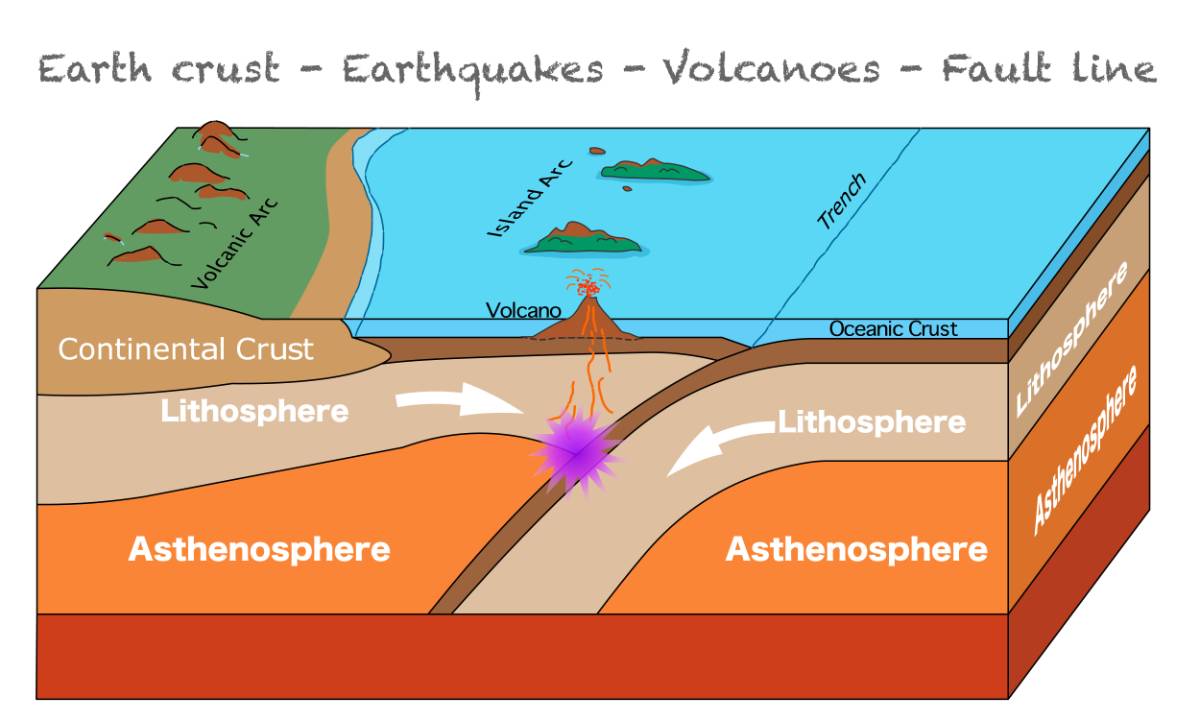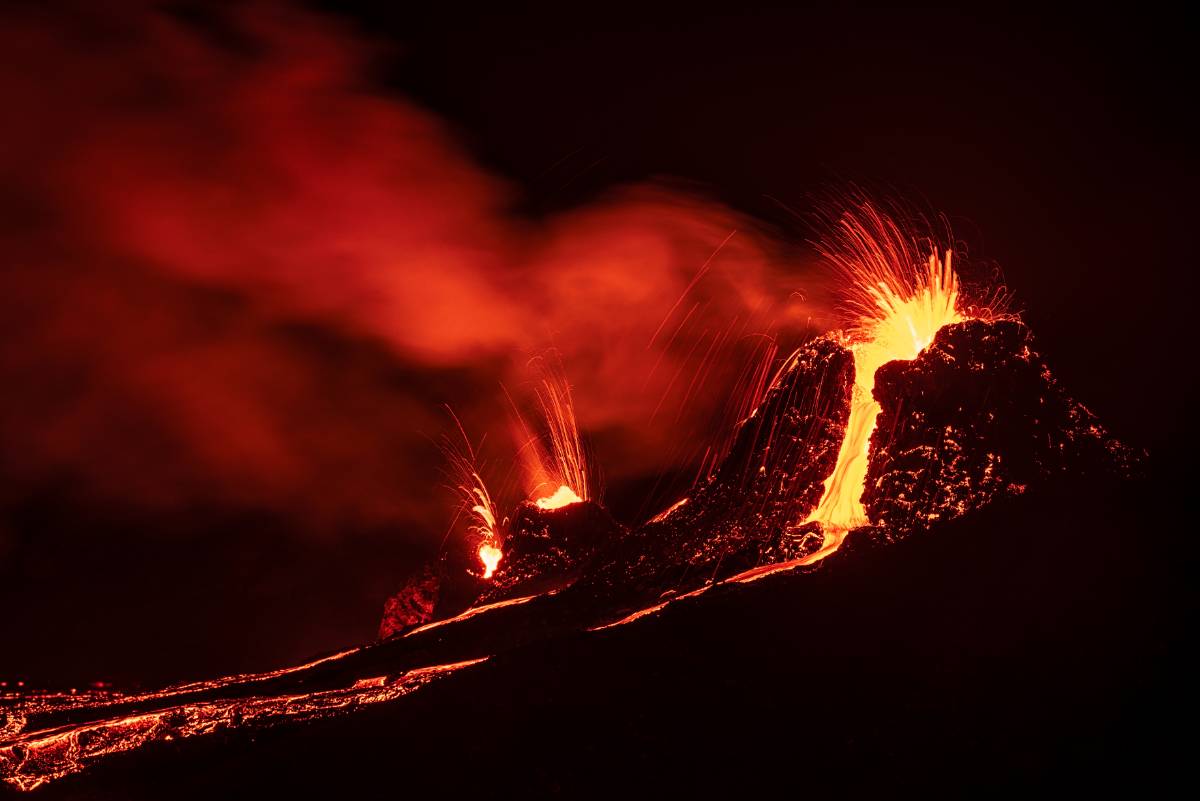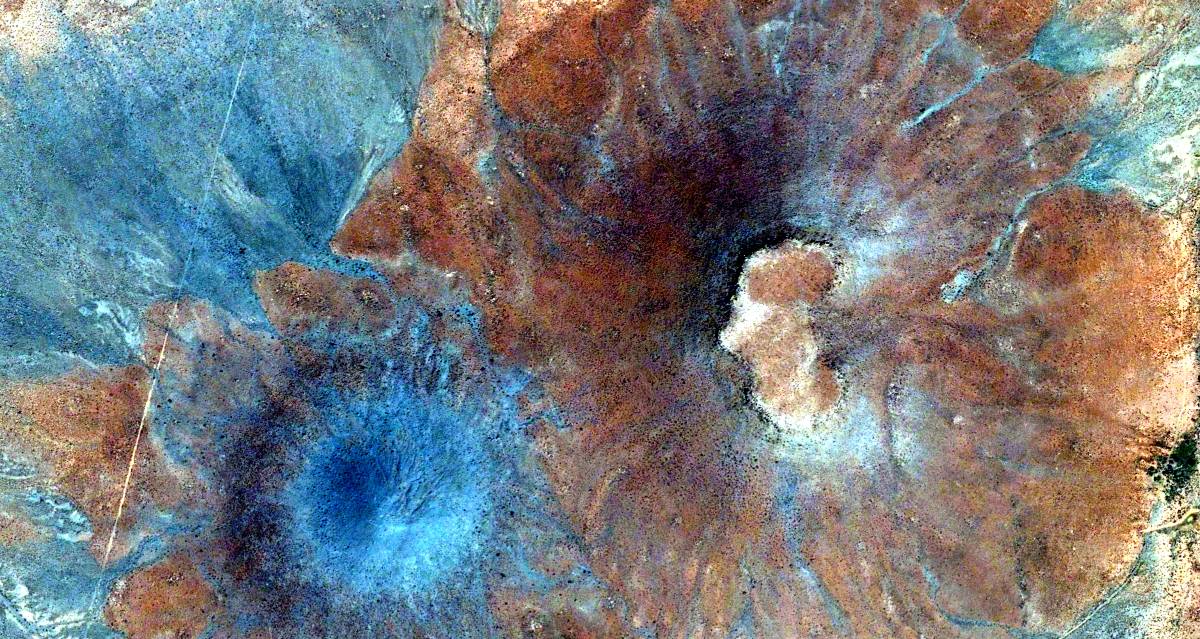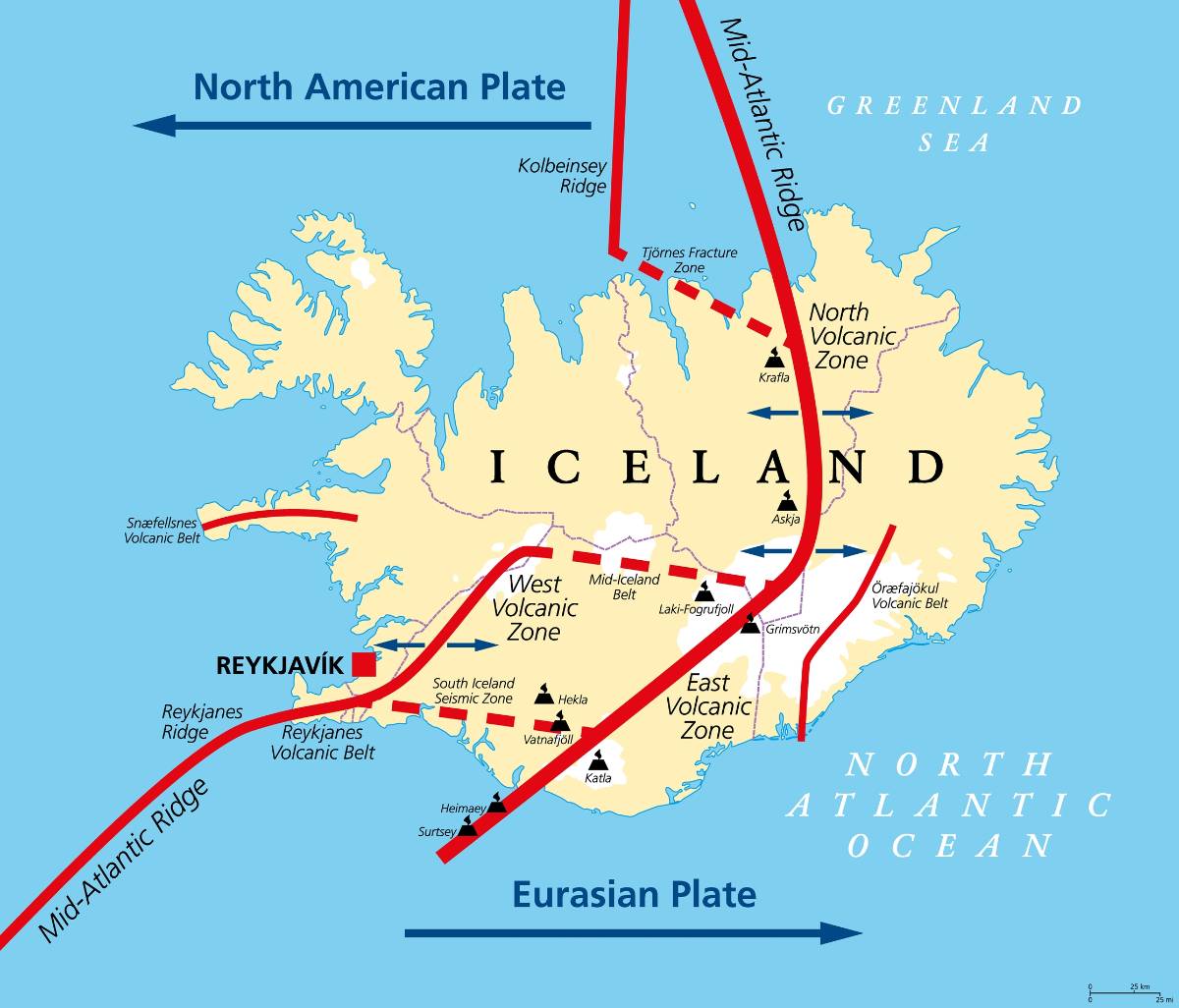Iceland volcanoes originate from the global movement of tectonic plates and is the reason Iceland exists. Sitting on the crack that divides two tectonic plates, Iceland has become a volcanic hot zone that is unique in the world. Luckily this doesn’t mean constant explosions and danger, but from time to time, the violent type of volcano will erupt.
Iceland is called the Land of Fire and Ice because of the large number of glaciers and volcanoes. This is cool and all, but how much do Icelanders really know about volcanoes and what do they even do with them? Find out the answers to these questions in this article about Iceland volcanoes – a fire saga.
How Are Volcanoes Formed?
Plate tectonics is the usual answer to this question, regardless of where you find a volcano. Continents rest on huge plates of extremely thick bedrock that float on top of an even thicker layer of magma. These plates are called continental plates, or tectonic plates, and they ever so often either collide with each other, pull apart from each other, or simply rub against each other.
Whenever the plates collide, pull apart, or brush up against each other, that might be a small thing for the plates, but often result in major geological events for us small humans. These interactions often create earthquakes, and in some cases, it opens up a gap between the plates that allows magma to come through and create a volcano on the surface.
In other instances, magma will simply penetrate the crust in some way and reach the surface to create a volcano. These areas in the crust are called “hot spots”.

Why Does Iceland Have So Many Volcanoes?
Iceland sits on the Mid-Atlantic Ridge, which is the 40,000-kilometre-long sub-ocean mountain range that splits the Eurasian and North American tectonic plates. On top of that, Iceland happens to sit on top of a big bubble of magma, which incidentally is the same bubble that pushes Iceland up to the surface of the ocean. If you have ever seen Iceland on a topographic map (a map that shows heights and stuff), you’ll see that it looks like Iceland is on top of a big plate. That is the crust that gets pushed up by the magma bubble.
This bubble of magma creates a large hot spot that covers Iceland and a large surrounding area. This is the major reason why we see so many Iceland volcanoes. The other reason is that the Mid-Atlantic Ridge is going straight through Iceland, creating a literal crack between the continental plates, which are drifting apart about 2cm each year. Magma finds its way through these cracks and creates the rest of the Iceland volcanoes.
How Often Do the Iceland Volcanoes Erupt?
Iceland is the perfect storm when it comes to volcanoes and has been like that for the past 50 million years or so. With all these Iceland volcanoes, there are sure to be a lot of eruptions and plenty of lava spilling over the country, right?
Iceland has a volcanic eruption on average every fourth year, making it one of the most volcanically active areas in the whole world. This doesn’t mean that the entire island explodes every time one of the Iceland volcanoes is feeling restless. It often means smaller eruptions, resulting in a spectacular, non-dramatic, view without any significant damage.
Don’t let these small eruptions fool you, though. Roughly a third of the amount of lava that has been produced on earth in the last 10,000 years has come up in Iceland. For such a small place, this is quite impressive and says a lot about the Iceland volcanoes.

Different Volcanoes
There are generally two types of volcanic eruptions: explosive and non-explosive. It all has to do with where the volcano is and how the opening gets formed.
Stratovolcano
When we think of Icelandic volcanoes, this is most likely the type we will think of: explosive, violent, with lots of smoke and ash, and rivers of lava. They take place whenever a huge amount of pressure builds up before “the lid” blows off. Luckily, these are not the most common type of volcano eruptions. Icelandic volcanoes have these kinds of eruptions followed by long periods of lava slowly pouring out in a very non-dramatic way.
Shield Volcano
This is (fortunately) a much more common type of volcano eruption. They are sometimes characterized in Icelandic volcanoes as stand-alone eruptions, even though they can be the aftermath of a stratovolcano eruption.
Iceland volcanos of this sort will “crack open” and have lava flows slide down the slopes of a volcano, slowly building up a “shield” of hardened lava along the sides. These are often non-explosive and started to form in Iceland between 5,000 to 10,000 years ago.
Submarine Volcanoes
We are not talking about Iceland volcanos travelling around the ocean, but rather all volcanoes that erupt underwater and don’t reach the water’s surface. These can erupt without us knowing anything about it and are believed to stand for roughly 75% of all volcanic eruptions on earth.

Surtseyan Volcanoes
Named after the uninhabited island off the Icelandic coast (Surtsey), these volcanoes are the types that are actually more explosive than stratovolcanoes. These are highly explosive volcanoes in (relatively) shallow waters that draw a big bang from the massive amounts of water that instantaneously vaporises when it comes into contact with lava.
Fun fact: Surtsey is a volcanic island that was created in the 1960s and became a worldwide phenomenon when it was declared a haven for wildlife. No human was allowed to go there without special scientific permission, and there have been extensive studies made to see exactly how life develops from scratch on an isolated island. Surtsey is a product of Iceland volcanoes and is now a lush green island, teeming with life.
Subglacial Volcanoes
The Land of Fire and Ice is called so since it has many volcanoes and glaciers. Due to this, it should come as no surprise to anyone that many Iceland volcanoes are subglacial ones. These can be shield volcanoes or stratovolcanoes, but as soon as they are under a glacier, they can also be called subglacial volcanoes.
Where Are Volcanoes in Iceland?
You can find all Iceland volcanoes along a specific line going across Iceland. It looks like a chair, with one leg in Reykjavik, the other in south Iceland, and the end of the back support somewhere just east of Húsavik.
To be honest, when it comes to how many volcanoes are in Iceland, it will be impossible to go anywhere o the island and not see traces of volcanic activity. You will find the most active volcanoes in the southern part, but there are also some volcanoes near Reykjavik. These are not necessarily very active, but you can see one particular volcano (Fagradalsfjall) that had an eruption in 2021.

How Are Volcanoes Used in Iceland?
There is nothing bad that doesn’t also come with something good. In true Icelandic spirit, the people of Iceland learned to harness some of the massive amounts of energy that comes from the geological activity.
Geothermal power
The geothermal power that originates from the Iceland volcanoes has become a natural resource that supports massive industries all across the island. Paired with hydroelectric power, aluminium smelting has become a calling card for the use of Iceland volcanoes.
But being as Icelanders are, it’s not all business when the volcanoes in Iceland are out and about. All natural hot springs that you can find all over the country are “powered” by geothermal activity, and the people take full advantage of this free luxury.
Volcano Tourism
Believe it or not: volcanic tourism has also become a big thing along with the tourism boom in Iceland. When the shield volcanoes have their eruptions, people will flock over to these locations to have a close look at the calm and powerful flow of lava. More often than not, these viewing spots are organised by some governmental body, just to make sure that everything is as safe as it can be next to a volcano.
Volcanic bakery
Last, and most likely least, is the many innovative uses people have found for the geothermal energy that comes with Iceland volcanoes. One example is the world-renowned “volcano bread” that people started marketing in Iceland. This is something that has been done on and off for a very long time, but only saw the marketing light of day when tourism became a big thing. This bread is buried in the hot slopes of Iceland volcanoes and typically left there for up to 24 hours, depending on the type of bread.
Come See for Yourself!
In Iceland, you can find all kinds of uses for a volcano, and the locals are experts in finding these fun and exciting methods. The best way to see this for yourself is to rent a car in Reykjavik and go around the island to visit the mighty Iceland volcanoes!


 By
By


